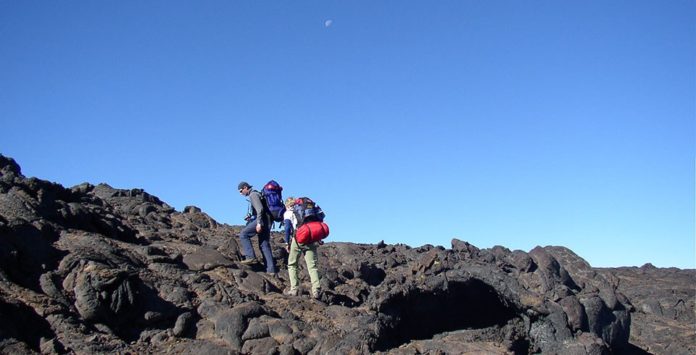Rapid ascent is usually associated with the condition but some people are more prone than others
Though the CBSE retests may play spoiler, the holiday season is round the corner. And with the mercury on the rise, the cool mountains beckon. Beware though of Acute Mountain Sickness. About 100 million people world over travel to high altitudes each year including travellers, trekkers, climbers, pilgrims, skiers or military personnel and all are at increased risk of acute mountain sickness. There is no gender disparity but people above 50 years have been found to have slightly lower risk.
What is acute mountain sickness?
Acute Mountain Sickness is the most common form of altitude illness characterized by headache, nausea, fatigue, dizziness and sometimes vomiting. It usually develops 6–12 hours after ascent to a high altitude. It is likely to occur above 2500 mts above sea level but cases have been documented even at 1500 to 2000 mts.
Barometric pressure which is the pressure of air that surrounds us, drops at high altitudes leading to decreased oxygen availability in the air we breathe in. Increased breathing causes disturbance of acid base balance, increased passage of urine followed by decreased periodic breathing and decreased oxygen in the blood. If the ascent is made faster than the body’s ability to adapt to the stress of hypobaric oxygen state, then altitude related symptoms can develop.
Acute Mountain Sickness is the most common form of altitude illness characterized by headache, nausea, fatigue, dizziness and sometimes vomiting. It usually develops 6–12 hours after ascent to a high altitude
How to prevent acute mountain sickness?
Gradual ascent with adequate time for acclimatization is the best method for the prevention of acute mountain sickness. A graded ascent of ≤300 mt from the previous day’s sleeping altitude is generally recommended when above 3000 mts. Spending one night at an intermediate altitude before proceeding to a higher altitude may increase acclimatization and reduce the risk of acute mountain sickness. Travellers to high altitude locations must be aware of the symptoms of altitude illness and should be encouraged not to ascend further if these symptoms develop.
Prevention with medications is required for people with a history of acute mountain sickness or when a gradual ascent and acclimatization are not possible e.g., when rapid ascent is necessary for rescue purposes or when a flight is taken. Acetazolamide (125–250 mg twice a day), taken for 1 day before the day of travel and continued for 2 or 3 days thereafter is effective. Dexamethasone (8 mg/d in divided doses) is also effective.
What are the severe forms of Acute Mountain Sickness and how to treat them?
High-altitude cerebral oedema (HACE) and High-altitude pulmonary oedema (HAPE) are the two life threatening forms.
-
HACE is usually associated with altered level of consciousness (which includes restlessness, increased sleepiness and decreased responsiveness) with difficulty in balancing while walking. Papilloedema and retinal hemorrhages (swelling in the eye, bleeding in the eye) may also be seen.
Immediate descent is mandatory for early HACE. Treatment includes oxygen inhalation (2-4 lt/min) and dexamethasone 8 mg given orally or by injection followed by 4 mg 6 hourly.
-
A reduction in exercise tolerance greater than that expected at the given altitude, easy fatiguability and shortness of breath at rest may be the initial symptoms of HAPE. A dry, persistent cough may precede HAPE and may be followed by the production of blood mixed sputum. Increased respiratory and heart rate even at rest are important markers for illness progression. It usually develops 2-4 days after arrival at high altitude.
Descent and the use of supplementary oxygen (4-6 lt/min) to maintain oxygen saturation above 90% are the most effective intervention. Exertion should be kept to a minimum and the patient should be kept warm. Oral sustained-release nifedipine (30 mg once or twice daily) can be used as additional treatment and inhaled β agonists are also safe.
In both HACE and HAPE hyperbaric therapy where the patient is put in a portable altitude chamber/bag to simulate descent may be used if descent is not possible and oxygen is not available.



Many thanks for a further spectacular posting video youtube terbaru. The spot otherwise might everyone wardrobe kind of information and facts in these an easy way regarding producing? I own a demonstration in the near future, using this program . on the look for this kind of info.
I quite like reading through a post that will make people think.
Also, thank you for allowing me to comment!
I have to get across my admiration for your generosity supporting persons who really want assistance with the area. Your very own dedication to getting the message all over has been extraordinarily functional and has in every case enabled ladies like me to reach their endeavors. Your new helpful publication signifies a great deal to me and far more to my colleagues. With thanks; from each one of us.